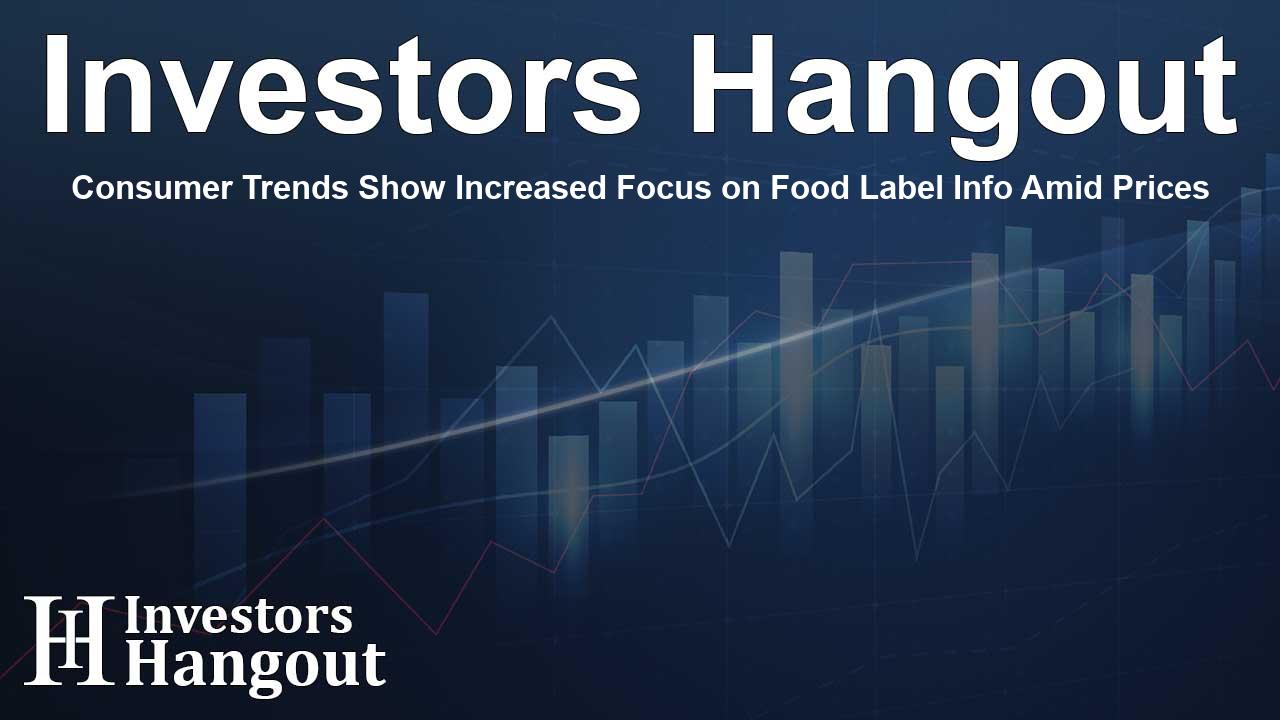Consumer Trends Show Increased Focus on Food Label Info Amid Prices

Consumer Trends Show Increased Focus on Food Label Info Amid Prices
As grocery prices continue to rise, 76% of shoppers desire more information to guide their purchasing choices.
A recent survey conducted by GS1 US reveals insightful trends among U.S. consumers regarding their shopping habits in response to escalating food prices. About 33% of adults anticipate higher food costs this summer compared to the previous year, largely driven by inflation. Additionally, nearly half, or 47%, expect prices to remain unchanged, indicating a significant 80% of respondents feel the ongoing pressure of heightened grocery prices.
With these rising costs, consumers are adjusting their shopping behaviors, paying closer attention to food labels and looking for smarter ways to make purchases. The survey highlights that more than 76% of consumers express a desire for increased product information due to the current economic climate. Notably, 71% of shoppers are now reading labels more meticulously than before, while 66% are willing to scan QR codes found on product packaging for vital details regarding freshness, ingredients, and shelf life.
Bob Carpenter, the president and CEO of GS1 US, underscores this shift in consumer behavior. He states, "Shopping habits are evolving, and consumers are more scrutinizing than ever at the point of purchase to ensure their choices align with their preferences and budgets. Consumers demand more transparency and accurate information, which our digital age facilitates through real-time access. QR codes driven by GS1 are becoming increasingly prevalent on product packaging, enabling shoppers to obtain reliable product details quickly via their smartphones — promoting smarter, more informed decisions directly at the shelves."
Through collaborative efforts across the industry led by GS1 US, brands worldwide are transitioning from traditional UPCs, which have efficiently served price lookups for decades, to advanced QR codes. These QR codes link each physical product to comprehensive digital information, all while maintaining the familiar checkout sound. These improved barcodes grant consumers access to crucial product data directly from the brands, including details about the product's origin, ingredients, synthetic dye disclosures, nutritional content, allergen information, storage suggestions, and much more. Retailers have set a goal to incorporate these QR codes at checkout by 2027; however, many are preparing to transition even sooner, as part of the GS1 US initiative called Sunrise 2027.
Carpenter remarks, "Though the primary aim of adopting QR codes powered by GS1 addresses consumer information requirements, the industry foresees numerous additional benefits. This shift includes streamlining complex packaging labels, facilitating recalls for specific items, automating discounts in real-time, and preventing the sale of expired products. The potential applications for QR codes on packaging are extensive and continually developing."
To learn more about how QR codes powered by GS1 are redefining consumer experiences related to shopping, eating, and living, visit their official website. For deeper insights about GS1 US itself, explore their detailed resource pages that illuminate their initiatives in setting industry standards and fostering transparency in product information.
About GS1 US
GS1 US is a not-for-profit organization that empowers businesses by providing a structured approach to managing their supply chains, ensuring safe, consistent, authentic, and trustworthy experiences. Known primarily for its creation of UPC barcodes, GS1 fosters a common language that allows businesses to accurately identify, capture, and share trusted data linking their physical and digital supply chains. Millions of businesses globally rely on GS1 Standards for their commerce operations.
Frequently Asked Questions
Why are consumers reading food labels more closely?
Consumers are increasingly scrutinizing food labels due to rising grocery prices, wanting to ensure they are making informed purchasing decisions.
What information do shoppers want from food labels?
Shoppers are seeking detailed product information, including freshness, ingredients, and potential allergens, to make more confident choices.
What role do QR codes play in food labeling?
QR codes provide immediate access to comprehensive product details, enhancing transparency and assisting consumers in making better-informed choices.
When can consumers expect QR codes to be accepted at checkout?
Retailers aim to accept QR codes by 2027, though many are anticipated to implement them sooner as part of industry initiatives.
How does GS1 US support businesses?
GS1 US helps businesses by providing standards that streamline supply chains and enhance data accuracy, allowing for better product tracking and consumer trust.
About The Author
Contact Riley Hayes privately here. Or send an email with ATTN: Riley Hayes as the subject to contact@investorshangout.com.
About Investors Hangout
Investors Hangout is a leading online stock forum for financial discussion and learning, offering a wide range of free tools and resources. It draws in traders of all levels, who exchange market knowledge, investigate trading tactics, and keep an eye on industry developments in real time. Featuring financial articles, stock message boards, quotes, charts, company profiles, and live news updates. Through cooperative learning and a wealth of informational resources, it helps users from novices creating their first portfolios to experts honing their techniques. Join Investors Hangout today: https://investorshangout.com/
The content of this article is based on factual, publicly available information and does not represent legal, financial, or investment advice. Investors Hangout does not offer financial advice, and the author is not a licensed financial advisor. Consult a qualified advisor before making any financial or investment decisions based on this article. This article should not be considered advice to purchase, sell, or hold any securities or other investments. If any of the material provided here is inaccurate, please contact us for corrections.
